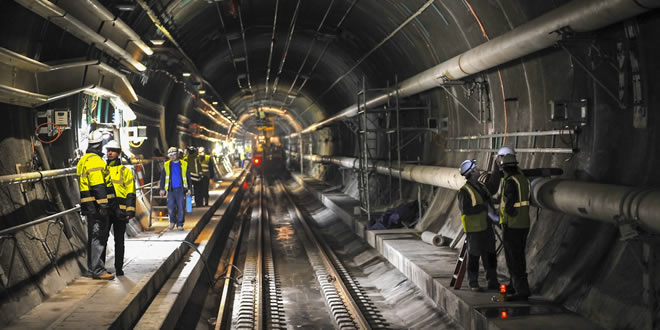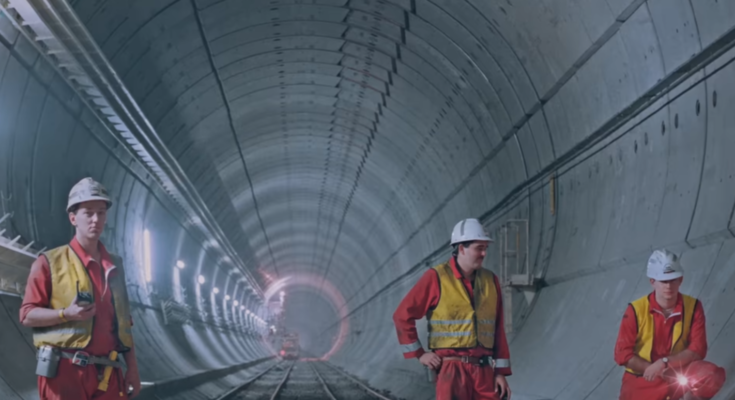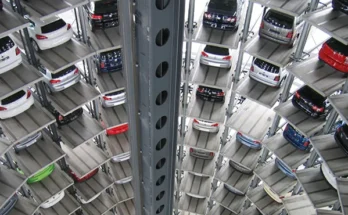Imagine boarding a train in London and arriving in New York in less than an hour. This mind-blowing concept, a £15.6 trillion Transatlantic Tunnel, could revolutionize global travel in ways never seen before. Spanning approximately 3,000 miles (4,800 km) beneath the Atlantic Ocean, this futuristic mega-project envisions using state-of-the-art magnetic levitation (maglev) trains traveling inside vacuum-sealed tubes at an astonishing speed of 5,000 mph (8,000 km/h). If realized, it would redefine transportation, slashing travel time between the UK and the US from the current seven-hour flight to just 54 minutes.
The Cutting-Edge Technology Behind the Tunnel

At the heart of this ambitious project is a combination of two groundbreaking technologies: magnetic levitation (maglev) and vacuum tube transport, commonly known as hyperloop technology. Maglev trains use powerful electromagnets to lift the train above the tracks, eliminating friction and allowing for smoother, faster travel. When combined with a vacuum tube system, which removes almost all air resistance, the train can achieve supersonic speeds without being affected by turbulence or drag.
This tunnel would be pressurized and built to withstand the intense underwater environment, ensuring both passenger safety and structural integrity. The entire system would rely on renewable energy sources, such as solar and tidal power, making it an environmentally friendly alternative to air travel.
Overcoming Engineering Challenges

Constructing a 3,000-mile tunnel under one of the deepest oceans in the world presents immense engineering challenges. The tunnel would likely be suspended in the water column using floating pontoons or anchored to the seabed, as traditional tunnel boring methods would be impractical at such depths. Advanced materials, including ultra-strong carbon fiber and graphene composites, would be required to withstand deep-sea pressures, earthquakes, and ocean currents.
Another major challenge is maintaining a vacuum inside the tube over such a long distance. Even a minor leak could disrupt the entire system. Engineers would need to develop fail-safe mechanisms, including emergency pressurization systems and high-speed airlocks, to ensure passenger safety in the event of any structural failures.
The Cost and Economic Impact

With an estimated price tag of £15.6 trillion, this would be the most expensive infrastructure project in human history. However, the economic impact of such a tunnel would be monumental. It would create millions of jobs in construction, engineering, and technology sectors while boosting international trade and tourism. The tunnel could also serve as a model for future ultra-high-speed transportation systems, potentially expanding to connect other continents.
Investors, governments, and private corporations would need to collaborate on an unprecedented scale to fund and develop the project. Given the rapid advancements in transportation technology, it’s not impossible to imagine such a tunnel becoming a reality in the next 50 to 100 years.
The Future of High-Speed Intercontinental Travel

If completed, the Transatlantic Tunnel would mark the beginning of a new era in global transportation. It would dramatically reduce reliance on air travel, cutting carbon emissions while offering a faster, more efficient way to travel between continents. Business travelers could attend meetings in New York and be back in London for dinner. Tourists could explore two of the world’s greatest cities in the same day. The possibilities are limitless.

While the Transatlantic Tunnel remains a concept for now, the technology behind it is progressing rapidly. As research into maglev and vacuum tube transport continues, what once seemed like science fiction may one day become an engineering marvel that changes the world forever.
Conclusion
The idea of a tunnel connecting the UK and the US at supersonic speeds is one of the most ambitious transportation concepts ever imagined. Though it comes with enormous challenges and costs, the potential benefits—ultra-fast travel, reduced carbon footprints, and global economic integration—are too significant to ignore. If humanity can overcome the technical and financial hurdles, the Transatlantic Tunnel could one day become a reality, redefining the very nature of intercontinental travel.



